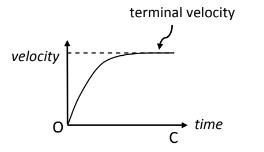Higher Physics - Dynamic Universe (Forces, Energy and Power + Collisions, Explosions and Impulse)
1/16
Earn XP
Description and Tags
Name | Mastery | Learn | Test | Matching | Spaced |
|---|
No study sessions yet.
17 Terms
Force Equation
F = ma where:
F = Force
m = Mass
a = Acceleration
Weight
Downward force on an object due to gravity, can be calculated with W=mg where:
W = weight
m = Mass
g = Gravity
Note: Gravity always 9.8ms-2 unless stated otherwise in question
Weight Component Down Slope
To find component down a slope (parallel to direction of slope) use w=mg sinθ where:
w = Weight
m = Mass
g = Gravity
θ = Angle of slope
Weight Component 90° to Slope
To find component 90° to a slope (perpendicular to direction of slope) use w=mg cosθ where:
w = Weight
m = Mass
g = Gravity
θ = Angle of slope
Different Types of Force
Friction - Opposes motion, created by surfaces rubbing together
Air resistance/drag - Force opposing motion as an object moves through air
Tension - Pulling force of an object like rope, cable etc.
Reaction - Force from contact of surface, always perpendicular (90°) to surface
Terminal Velocity
When forces on an object are balanced while in motion (force of motion and force opposing motion are equal)

Conservation of Energy
Energy cannot be created or destroyed
Can only be converted between forms
Kinetic Energy Formula
Kinetic energy can be calculated through Ek = ½ mv2 where:
Ek = Kinetic Energy
m = Mass
v = Velocity
Potential Energy
Potential Energy can be calculated with Ep = mgh where:
Ep = Potential Energy
m = Mass
g = Gravity
h = Height
Work Energy
Work Energy can be calculated by Ew = fd where:
Ew = Work Energy
f = Force
d = Distance
Power
Rate at which energy is transferred, measured in watts (W) and can be calculated through the equation P = E/t where:
P = Power
E = Energy
t = Time
Momentum
Vector quantity measured in kgms-1, product of mass and velocity and calculated through the equation p=mv where:
p = Momentum
m = Mass
v = Velocity
Conservation of Momentum
During collision/explosion, total momentum before = total momentum after
Elastic Collisions
Both momentum and kinetic energy are conserved
Inelastic Collisions
Momentum is conserved, but kinetic energy is not (lost as heat)
Impulse
Impulse is the force exerted on an object over a period of time (Ft), and is equal to the change of momentum to an object, therefore can be calculated through the equation Ft = mv - mu where:
F = Force
t = Time
m = Mass
v = Final Velocity
u = Initial Velocity
Impulse Rules
Longer contact time/smaller force = less impulse
During collision between two objects impulses are equal in size but opposite in direction